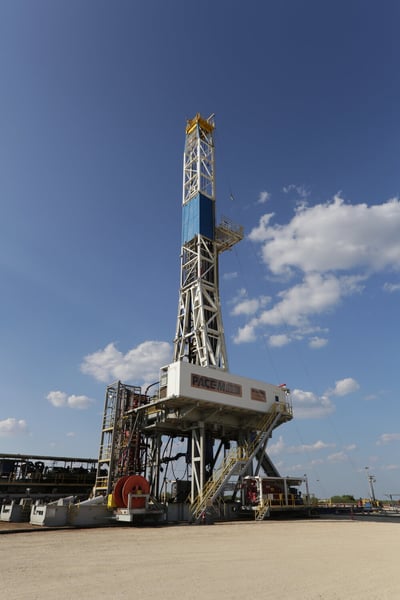 A recent article in The Houston Chronicle reviewed some of the consequences of a hydraulic fracturing ban on federal lands proposed by presidential candidate Joe Biden. You can read the post, The crown jewel of the shale patch braces for a Biden Ban, that originally appeared in Bloomberg here.
A recent article in The Houston Chronicle reviewed some of the consequences of a hydraulic fracturing ban on federal lands proposed by presidential candidate Joe Biden. You can read the post, The crown jewel of the shale patch braces for a Biden Ban, that originally appeared in Bloomberg here.
While a broad ban on new drilling permits or even lease sales would be difficult for Biden to impose immediately, it is especially worrisome for New Mexico. In recent years, New Mexico has become the second-biggest oil producing state, behind only Texas, according to the most recent monthly data.
While in many states, oil and gas exploration and production take place on private land, roughly 90% of all production in the New Mexico Permian was on state and federal lands last year, according to the New Mexico Oil & Gas Association. This makes New Mexico a target for economic and job losses if these initiatives proceed after the election.
Job losses under any such fracing ban could be tremendous. The American Petroleum Institute said in a recent report that some 62,000 jobs are at stake in New Mexico alone if a Biden administration imposes a moratorium. The New Mexico Oil & Gas Association points out that oil and gas made up 39% of state revenues in 2019.
The irony here is that the service companies who perform hydraulic fracturing cleaned up their act long ago, with the CEO of Halliburton famously ‘drinking’ the chemical frac concoction to show how safe the downhole mix is. And studies have shown that the fracturing process, when conducted properly —has little possibility of contaminating water supplies and does not cause seismic events. Articles on the U.S. Geological Survey website detail how properly constructed wells prevent drilling fluids, hydraulic fracturing fluids, or oil and gas from entering aquifers. Other articles show how earthquakes are primarily caused by disposal of waste fluids (injection wells), and not a by-product of the drilling process.
It’s disappointing that the supporters of a ban on hydraulic fracturing don’t understand—or are not willing to try to understand—how the process works, or the measures oil and gas operators have put in place to ensure a safe and environmentally conscious outcome.
As for New Mexico, it already has some of the country’s most stringent regulations in some segments of the oil and gas lifecycle. One of our recent blogs on regulatory aspects of drilling solids and fluids disposal discussed how closed-loop systems are being increasingly mandated by state governments across the country. In New Mexico, closed-loop systems are highly recommended whenever possible to reduce the volumes of drilling fluid, and are key in preventing surface water or nearby land contamination from runoff or a spill. With their push for widespread use of closed-loop systems, the regulators in New Mexico are at the forefront of addressing spills and surface contamination, which are tangible threats to the environment.
Regardless of the location, solids control in conjunction with a closed-loop drilling system provides a critical and beneficial process where all cuttings and fluids are captured, processed and discharged without the use of any open pits. All cuttings are hauled off and disposed while fluids are reconditioned, cleaned and processed, then returned to the mud system.
Panther Fluid Management has the experience to assist your company with all of its solids and fluid disposal needs. Our system designs are backed by years of experience and have consistently lowered overall mud costs for clients. We consult with the operator to design the best fluids system for each well; including everything from discrete services like mud and screens to fluids engineering to complex closed-loop systems for solids control to haul-off and disposal. More importantly, we understand the total fluids life cycle and can prepare for many contingencies based on well conditions.

